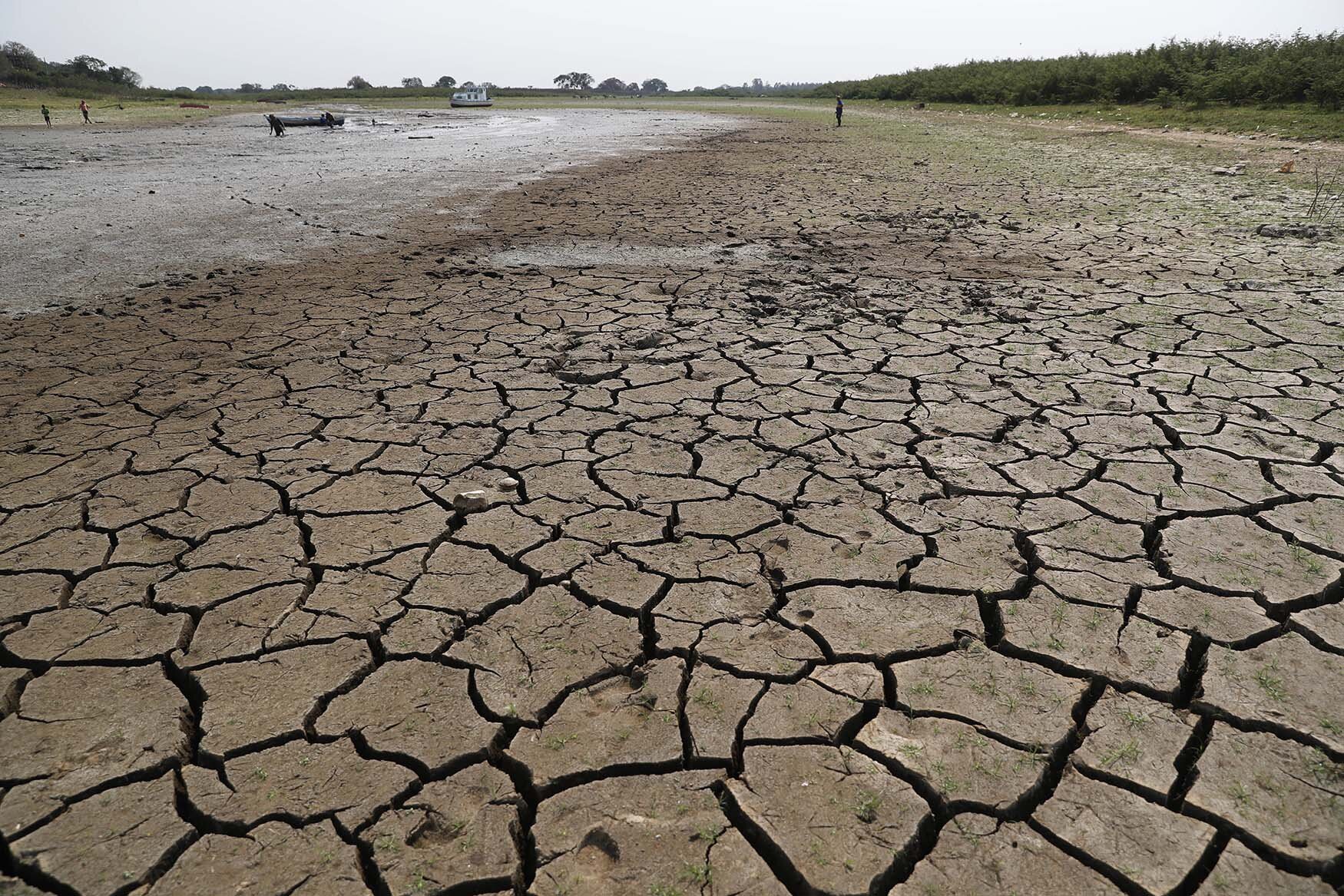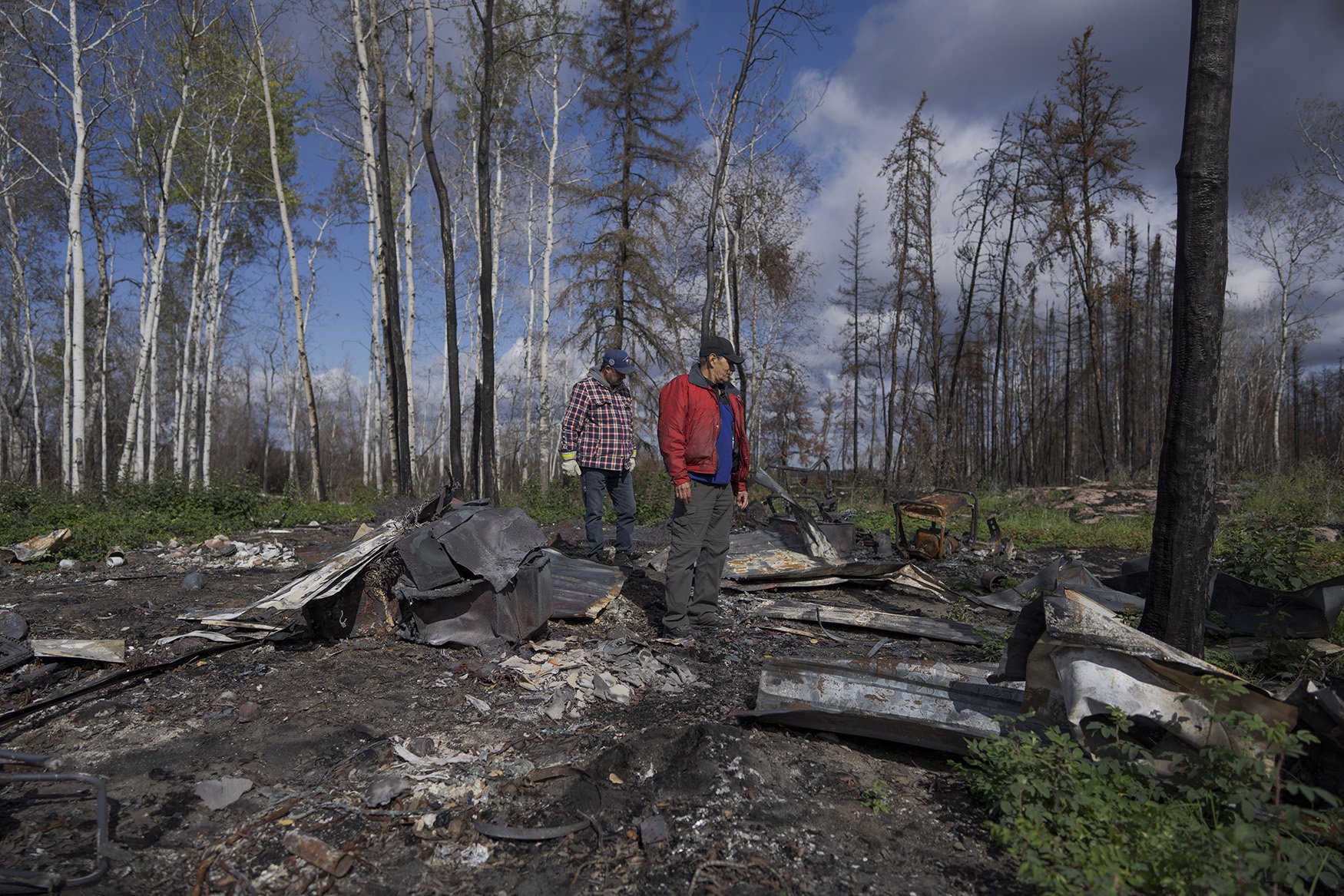Drought hits South America river, threatening vast ecosystem

The Paraná River, one of the main commercial waterways in South America, has reached its lowest level in nearly 80 years due to a prolonged drought in Brazil that scientists attribute to climate change.
At peril is a vast ecosystem that includes potable water for 40 million people, the livelihood of fishing communities and farmers, and the navigability of a major grain export hub.
The National Water Institute of Argentina has defined the low water level of the Paraná River, which goes through Brazil, Paraguay, and Argentina, as “the worst since 1944.”
“This natural asset is clearly giving us signs that it’s not infinite,” said environmentalist Jorge Bartoli, coordinator of the organization “El Paraná No Se Toca” (Parana Should Remain Untouched).
The low water level is due to a record drought in Brazil, where the river begins.
People who live in the fishing village of Espinillo Island walk their goods across the Old Parana River delta amid a drought that turned the river into a sand bank, near Rosario, Argentina, July 29, 2021. (AP Photo/Victor Caivano)
Marcelino Carrizo, 50, rests outside his home in a fishing village on Espinillo Island, a Parana River island in front of Rosario, Argentina, Thursday, July 29, 2021. (AP Photo/Victor Caivano)
A fishing net hangs to dry in a fishing village on Espinillo Island, on the other side of the Parana River from Rosario, Argentina, July 29, 2021. (AP Photo/Victor Caivano)
A section of the Rosario River bank is eroded right in front of a high school, triggered by a drought in Rosario, Argentina, July 30, 2021. (AP Photo/Victor Caivano)
The midwestern and southern regions of Brazil are in a big water crisis. Water reservoirs, including the giant Itaipu dam, are at their lowest levels in 91 years and Brazilian authorities have issued an emergency alert for five states: Minas Gerais, Goiás, Mato Grosso do Sul, São Paulo and Paraná.
Reduced water levels are part of a natural cycle, but specialists warn that the scenario is more extreme because of climate change.
“These climate changes that were less frequent before are becoming more frequent,” said Brazilian climatologist José Marengo.
Environmentalists say deforestation is contributing to the problem.
A grain ship sits anchored in the middle of the Parana River as it waits its turn to enter the port of Rosario, Argentina, Thursday, July 29, 2021. (AP Photo/Victor Caivano)
Children play on the exposed shores of the Parana River, in a fishing village on Espinillo Island, on the other side of the river from Rosario, Argentina, July 29, 2021. (AP Photo/Victor Caivano)
A boats sit stranded on a dry creek bed in a fishing village on Espinillo Island, a Parana River island in front of Rosario, Argentina, July 29, 2021. (AP Photo/Victor Caivano)
The pillars of the massive Rosario-Victoria Bridge are exposed during a drought affecting the Parana River near Rosario, Argentina, July 29, 2021. (AP Photo/Victor Caivano)
The Paraná waterway and its aquifers supply fresh water to some 40 million people in countries including Brazil and Argentina.
In turn, it receives water from the Paraguay River, which has among its main sources the Pantanal area, a huge wetland located in the Mato Grosso region of southern Brazil.
The drought of the river is impacting the transport of goods.
Guillermo Miguel, president of the port of the city of Rosario, said vessels had to reduce their tonnage by approximately 20% to continue moving. He said transport costs are increasing.
In 2019, 79 million tons of grain, flour and oil were exported from Rosario, according to the city's stock exchange, making it one of the biggest agricultural export hubs in the world.
The massive Rosario-Victoria Bridge crosses the Parana River near Rosario, Argentina, July 29, 2021, amid a drought. (AP Photo/Victor Caivano)
Text from AP News story, Drought hits South America river, threatening vast ecosystem, by Victor Caivano and Almudena Calatrava.
Photos by Victor Caivano





